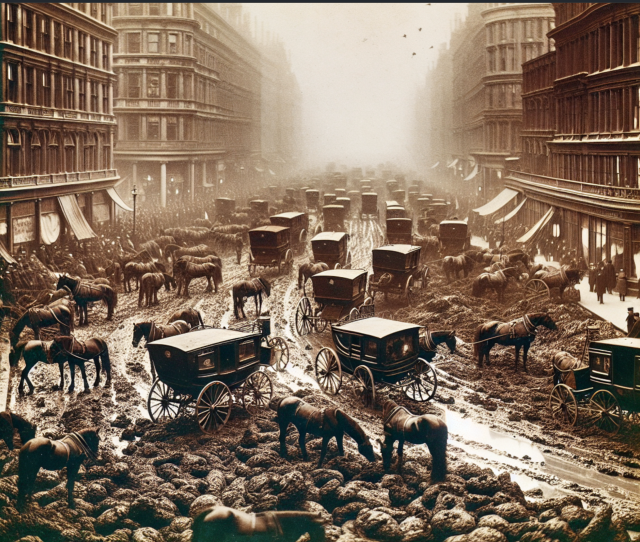Imagine walking through the streets of New York City or London in the late 19th century. The air is thick with the stench of horse manure, and the ground beneath your feet is a minefield of muck and mire. This was the reality for residents back then, and it’s a story that’s both fascinating and repulsive.
In 1894, New York City was home to over 150,000 horses. Each of these horses produced around 15 to 30 pounds of manure daily, and 40 gallons of urine. That adds up to more than three million pounds of manure and 6 million gallons of urine every single day. The sheer volume was overwhelming, and the city struggled to keep up with the disposal.
Urban streets were treacherous. Pedestrians had to navigate through a sea of horse dung, which made every step a potential hazard. “Crossing sweepers” were hired to clear paths through the mire for a fee, but even this service couldn’t keep up with the constant flow of waste. Wet weather turned the streets into swamps and rivers of muck, while dry weather brought its own set of problems: the manure dried out and turned to dust, which was then whipped up by the wind, choking pedestrians and coating buildings.

Even when the manure was removed from the streets, it piled up faster than it could be disposed of. Early in the century, farmers were eager to buy horse manure as fertilizer, but by the end of the 1800s, stable owners had to pay to have it carted away. This led to a bizarre situation where vacant lots in cities across America became giant dumping grounds for horse manure. In New York, these piles sometimes rose to as high as 40 or even 60 feet.
It wasn’t just a nuisance; it was a serious health hazard. It was an ideal breeding ground for flies, which spread diseases like typhoid and infant diarrheal diseases. These outbreaks were directly linked to spikes in the fly population, making the horse manure problem a public health crisis.
Historian Morris aptly described the stench as “omnipresent.” The city reeked, and there seemed to be no solution in sight. The horse manure problem was a symptom of a larger issue – the rapid urbanization and industrialization of cities without adequate infrastructure to handle the waste.










